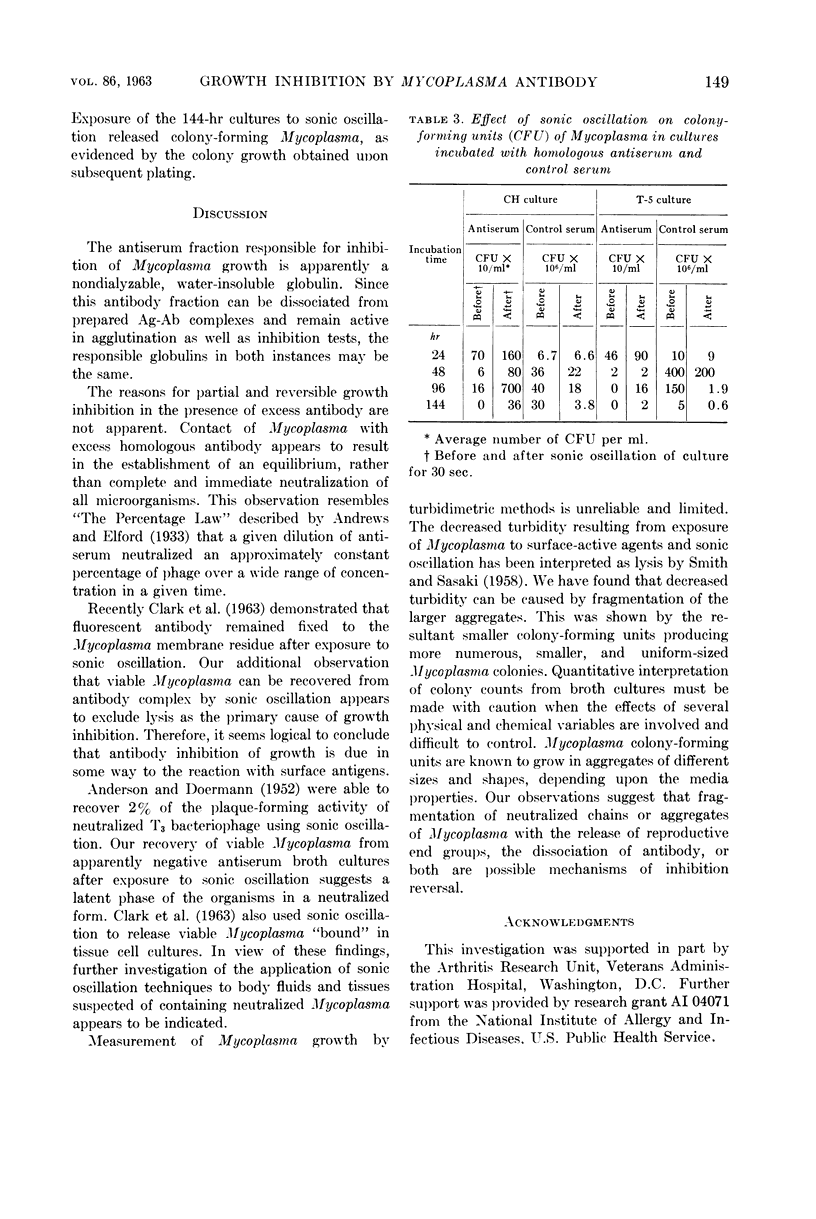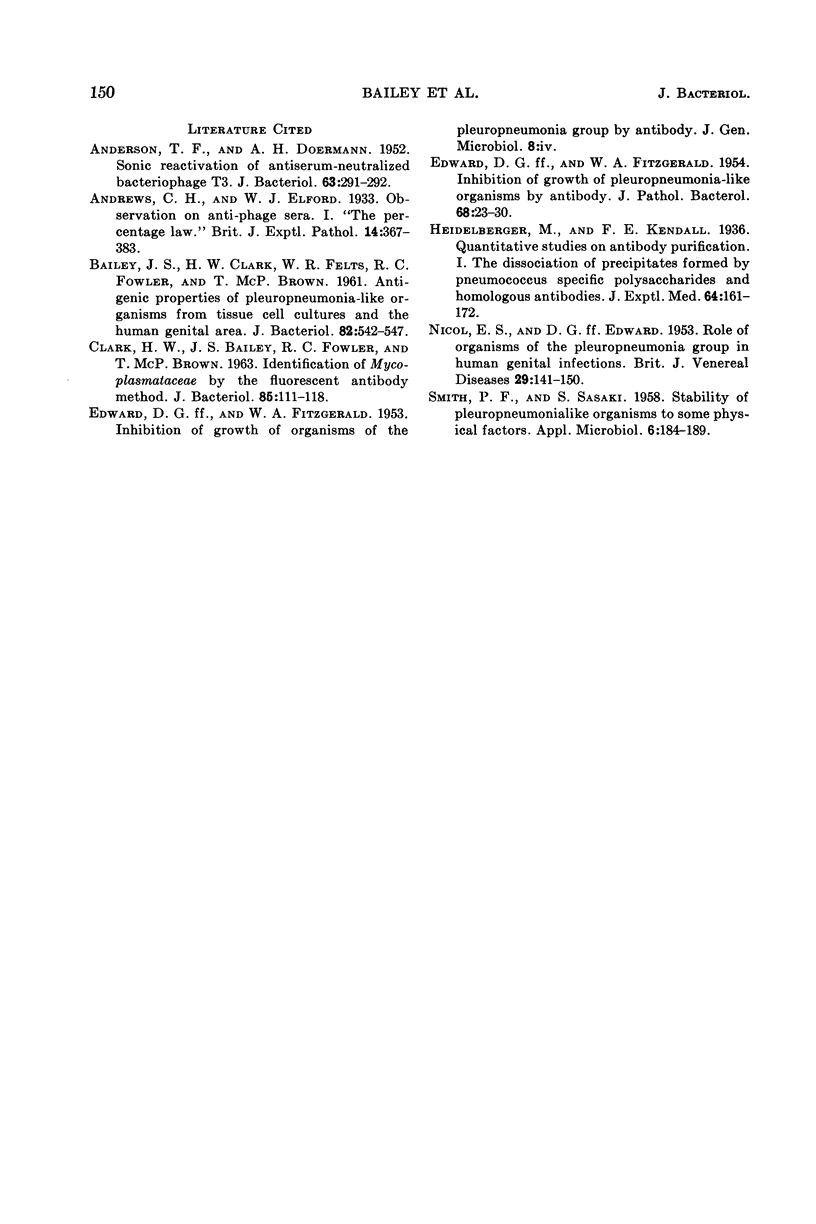Abstract
Bailey, Jack S. (The George Washington University, Washington, D.C.), Harold W. Clark, William R. Felts, and Thomas McP. Brown. Growth inhibitory properties of Mycoplasma antibody. J. Bacteriol. 86:147–150. 1963.—A substance in antiserum responsible for growth inhibition of Mycoplasma was found to be associated with the water-insoluble globulin fraction. This fraction and the agglutinins removed from agglutinated antigen inhibited the growth of Mycoplasma in a similar manner. Sonic oscillation of antiserum broth cultures partially relieved the growth inhibition. The results of this study suggest the existence of neutralized Mycoplasma in a latent phase, which could explain their infrequent detection in tissues and fluids. The application of such techniques as sonic oscillation may improve the recovery and identification of Mycoplasma from these sources.
Full text
PDF



Selected References
These references are in PubMed. This may not be the complete list of references from this article.
- ANDERSON T. F., DOERMANN A. H. Sonis reactivation of antiserum-neutralized bacteriophage T3. J Bacteriol. 1952 Feb;63(2):291–292. doi: 10.1128/jb.63.2.291-292.1952. [DOI] [PMC free article] [PubMed] [Google Scholar]
- BAILEY J. S., CLARK H. W., FELTS W. R., FOWLER R. C., BROWN T. M. Antigenic properties of pleuropneumonia-like organisms from tissue cell cultures and the human genital area. J Bacteriol. 1961 Oct;82:542–547. doi: 10.1002/path.1700820236. [DOI] [PMC free article] [PubMed] [Google Scholar]
- Clark H. W., Bailey J. S., Fowler R. C., Brown T. M. IDENTIFICATION OF MYCOPLASMATACEAE BY THE FLUORESCENT ANTIBODY METHOD. J Bacteriol. 1963 Jan;85(1):111–118. doi: 10.1128/jb.85.1.111-118.1963. [DOI] [PMC free article] [PubMed] [Google Scholar]
- EDWARD D. G., FITZGERALD W. A. Inhibition of growth of pleuropneumonia-like organisms by antibody. J Pathol Bacteriol. 1954 Jul;68(1):23–30. doi: 10.1002/path.1700680104. [DOI] [PubMed] [Google Scholar]
- NICOL C. S., EDWARD D. G. Role of organisms of the pleuropneumonia group in human genital infections. Br J Vener Dis. 1953 Sep;29(3):141–150. doi: 10.1136/sti.29.3.141. [DOI] [PMC free article] [PubMed] [Google Scholar]
- SMITH P. F., SASAKI S. Stability of pleuropneumonialike organisms to some physical factors. Appl Microbiol. 1958 May;6(3):184–189. doi: 10.1128/am.6.3.184-189.1958. [DOI] [PMC free article] [PubMed] [Google Scholar]


